Apr 20, 2018 | Blog, Collectibles, Ghosts, Sports
… and we start thinking about boating

We’ve shown this beautiful Spanish Galleon sailing vessel before, but it’s still waiting for the perfect home. It’s an absolutely stunning model. The little red sailboat in the foreground is ‘not for sale’ since we have a young boy ghost who plays among the shelves and gets mighty upset when we move his boat. The other sailboat in the background is for sale. Stop into Bahoukas and see these models. We’re sure they’re perfect for someone! We’ll be watchin’ for ya!
Apr 18, 2018 | Blog, Collectibles, Paper
… offer some beautiful possibilities
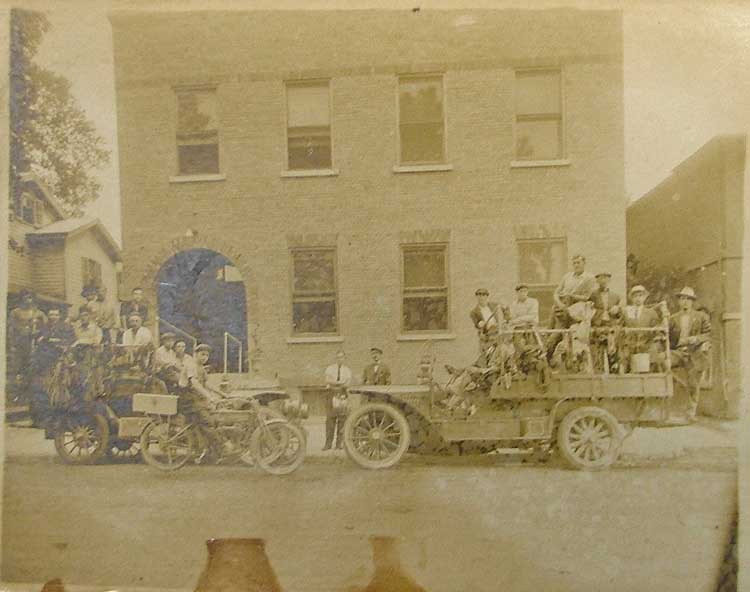
Old photos always take us back to another time. Visually they help us see another era. But they also cause us to wonder about their lives. Sometimes you even ponder if there was a way you could create something with the photos that seem to touch you in some way. Speaking of how a photo may touch us, did you notice the vintage Harley Davidson in the front of the photo above? Well, now you see it!

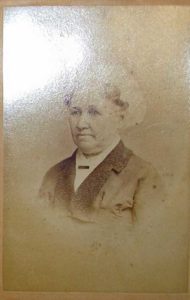
Do you ever fall in love with old photos you find in antique shops and wish there was a project so you could use them? We’ve included a wonderful link in this post that gives you 30 ideas. Once you look it over, I’ll bet your creative mind will be going in 100 directions, thinking of the gifts and unique items you might create for others as well as yourself. Stop in and see our many old photos.
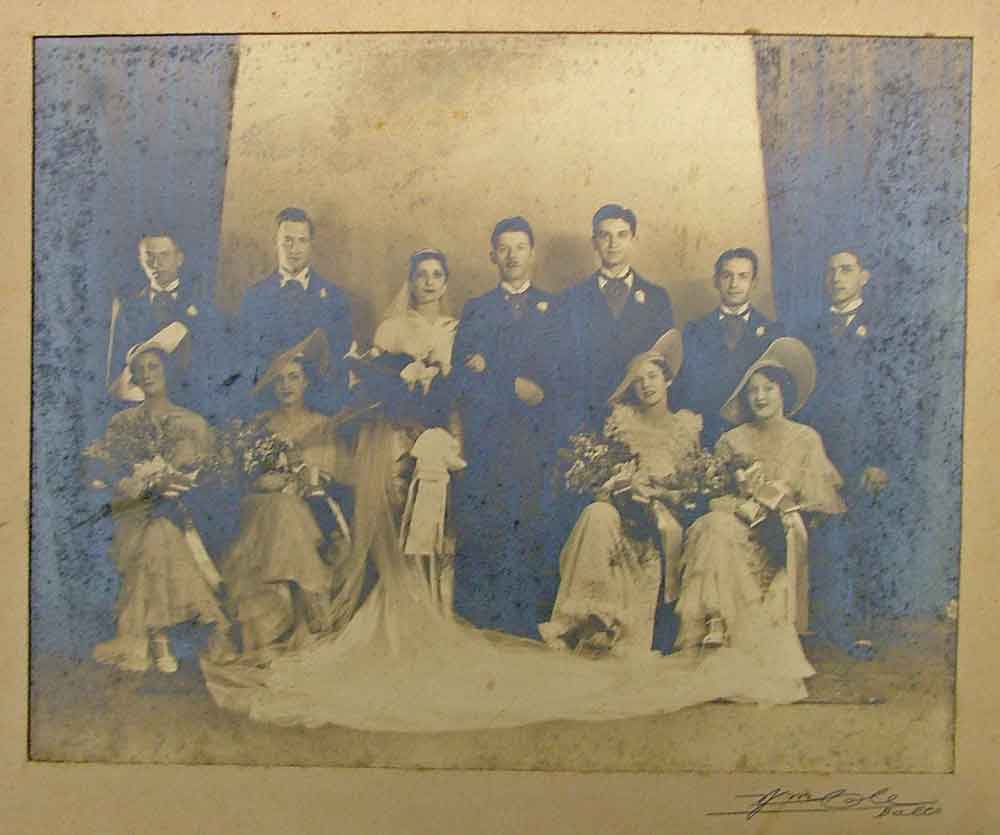
This webpage gives 30 Creative Ways to Repurpose Repurpose Old Photos. It may, at first, feel like it wouldn’t work for anything you want. But as I perused the options, I was picturing all the beautiful black & white and sepia tone photos I’ve seen in antique shops. What if all those amazing bridal photos were used to create a lovely runner for the bride’s table. Just an idea. Now go create! Yes, we have lots of old photos and we’ll be watchin’ for ya!
Apr 16, 2018 | Blog, Collectibles, Dishes
from the Blue Room Collection

The patterns, left to right, are Tower, Italian, Camilla, and Sunflower. These are huge cups and absolutely beautiful. Stop in and see them for yourself. Yes, they are for coffee or tea, but they make beautiful soup cups. Stunning.
We have a wonderful selection of SPOKE porcelain – over 100 pieces. We’ll be watchin’ for ya!
Apr 13, 2018 | Blog, Collectibles, Paper
Stunning Very Collectible Vintage Postcards
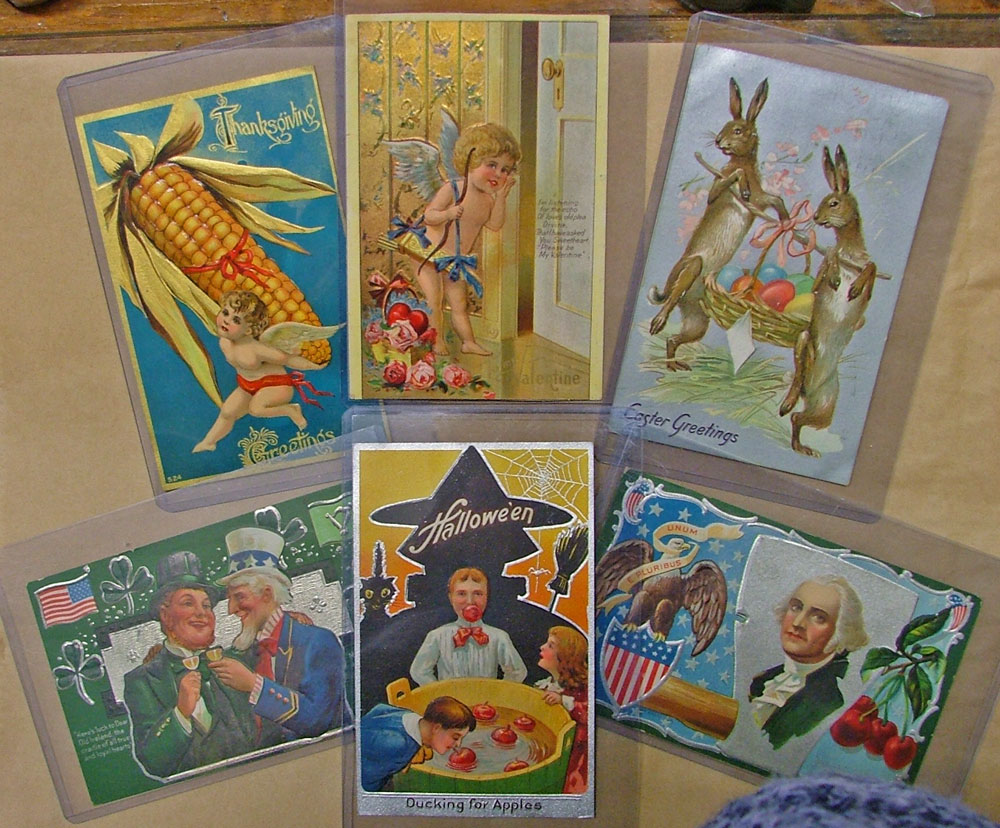
We recently received hundreds – yes, hundreds of beautiful, stunning, vintage postcards. Many of them are embossed. We have beautiful postcards for nearly every holiday and dozens of subjects. You have to see them to appreciate them. They are just stunning. Whether you add them to your collection, use them for decoupage, or frame them, these vintage postcards are a delight!
Hurry in and see them for yourself. If you love vintage postcards, you won’t be disappointed. We’ll be watchin’ for ya!
Apr 11, 2018 | Beer MuZeum, Blog, Collectibles, Events/News/Fun
Beer Collectibles for You
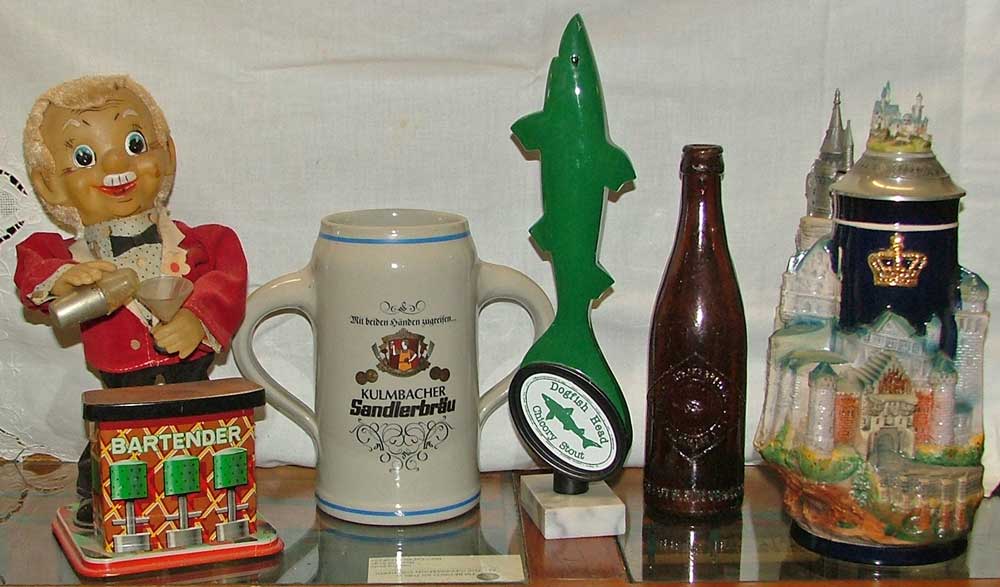
This Saturday, April 14, 2018 from noon to five is the first ever Craft Beer and Wine Festival at the Susquehanna Museum at the Lock House. We thought we’d share a few items for those beer lovers and maybe, just maybe, you’d like to have one of these unique steins or choose a pewter tankard – also available at Bahoukas. Hurry in and choose your favorite.
Left to right pictured above include the Bartender battery operated collectible, a double-handle German Beer Stein, a Dogfish Head Chicory Stout tap handle, a 1920s Chesapeake Brewing Co. beer bottle with the terrapin turtle, and a beautiful Neuschwanstein Castle Stein from Germany, limited edition.
We’ll be watchin’ for you at the shop and be sure to say ‘hi’ at the festival!
Apr 9, 2018 | Blog, Collectibles
Medical items to add to your special collection
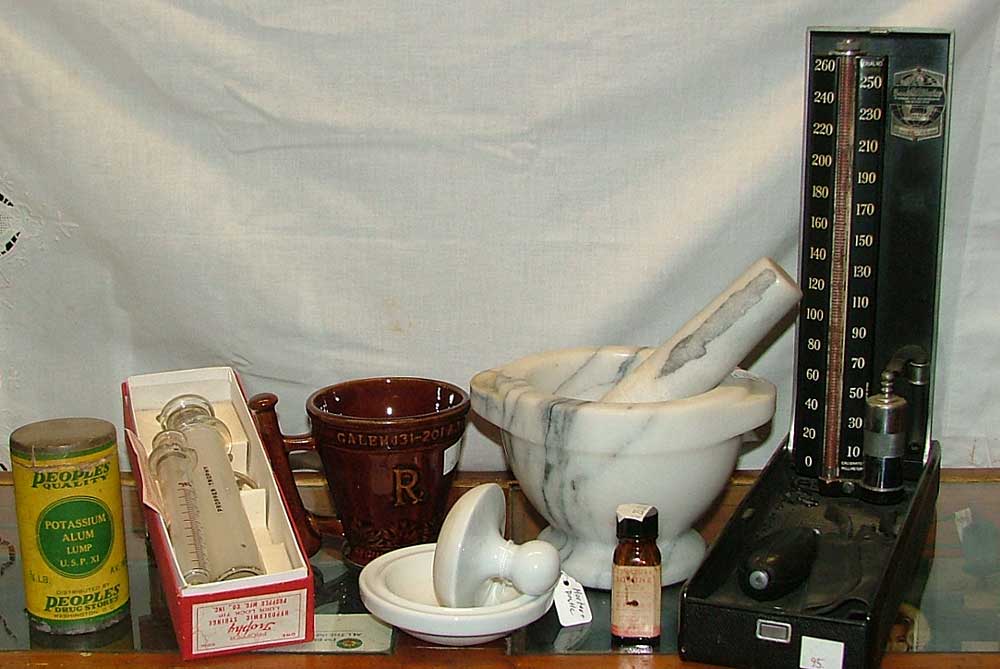
We do get some unusual items at Bahoukas Antique Mall. Above are a variety of medical collectibles. They include (l to r):
- Peoples Quality Potassium Alum Lump from Peoples Drug Store
- glass hypodermick syringe
- a ceramic mug with Rx on it
- Two varieties of mortar and pestle
- a Tincture of Iodine bottle
- and a Vintage BP Cuff
So if you’re a collector of medical items, you might want one or all of these for your bookshelf or shadow box. Stop in soon and choose your favorites to complete your collection. Yep, we’ll be watchin’ for ya!
Apr 6, 2018 | Blog, Collectibles, Music
First Fridays in Havre de Grace
… mean food, shopping, meeting up with friends, games, vendors, and MUSIC!! And we have the memorabilia to add to the fun!
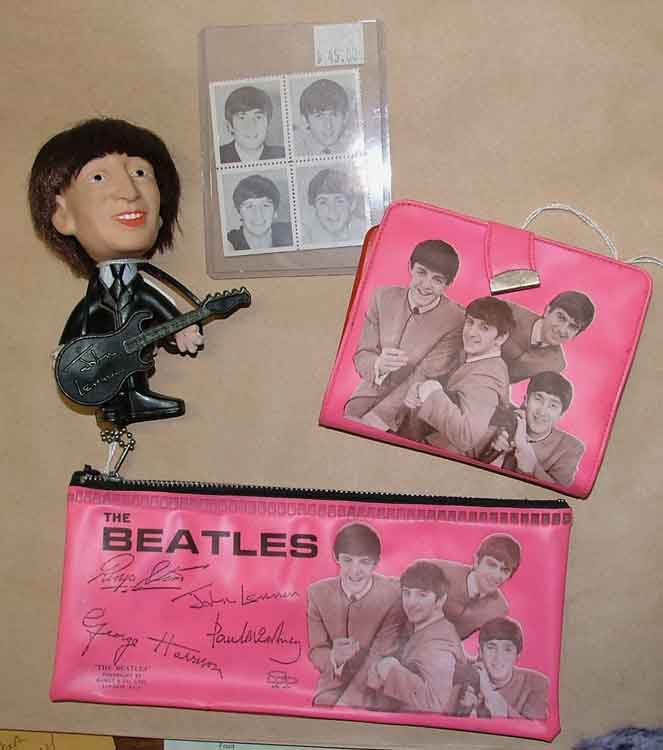
Above are a number of fun Beatles items: a John Lennon figure, Beatles stamps, and a pink wallet and pencil case – all from the ’60s! Below are Beatles trading cards.

Beatlemania was the intense fan frenzy directed towards the English rock band the Beatles in the 1960s. The phenomenon began in 1963 and continued past the group’s break-up in 1970, despite the band ceasing public performances in 1966.
_from Wikipedia
So much of the music from the 1960s and 1970s is still loved today by all ages. So as you enjoy our First Friday, don’t forget to stop by Bahoukas and check out our Beatles, Elvis and more music memorabilia PLUS CDs, Records, and more. Yep, we’ll be watchin’ for ya!
Mar 22, 2018 | Advertising, Blog, Collectibles, Home
What do Little Sprout, Nestle’s Toll House, and Wiley Coyote have in common?
Cookie jars!

Artist Andy Warhol amassed a collection of 175 ceramic cookie jars. These were in a multitude of shapes and figures. Most were purchased at flea markets. Warhol’s collection was featured in a prominent news magazine and sparked an interest in collecting cookie jars. When asked in the 1970s why he pursued the 1930s and 1940s jars, Warhol said simply, “They are time pieces.” At an auction of his apartment’s contents in 1987, Warhol’s collection of cookie jars realized $250,000.
The Brush Pottery Company of Zanesville, Ohio is generally recognized as producing the first ceramic cookie jar.
__from Wikipedia
This comment about cookie jars used for advertising product is interesting:
Early on, American companies would fill cookie jars with their product and sell the entire container. It was an easy and popular way to promote their brand and product.
The above quote comes from a great article from Antique Trader. Read it for 9 other interesting tips about the history of cookie jars.
Of course, here at Bahoukas Antique Mall we have wonderful collection of cookie jars. Come to think of it, they’re just in time for our upcoming Easter and Spring celebrations. Brighten up your kitchen with a unique, collectible cookie jar. And yes, we’ll be watching for ya!
Mar 21, 2018 | Blog, Collectibles, Sports
Baseball – Football – Desert Storm and more…
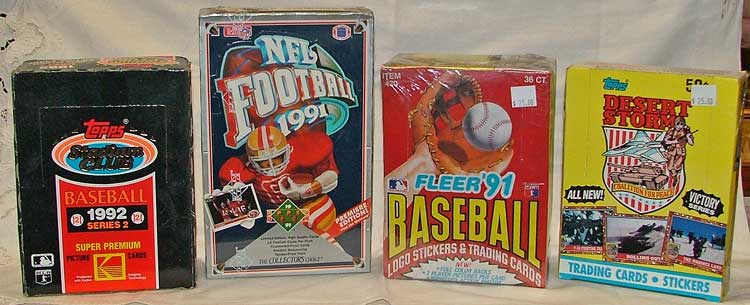
It may be snowing out today… and a bit of a challenge to be thinking sports, unless maybe Winter Olympics!! But we have a number of unopened boxes of sport cards as well as single packs. Above (l to r) includes:
- 1992 Top Stadium Club Baseball Cards
- 1991 Upper Deck NFL Football Cards
- 1991 Fleer Baseball Cards
- 1991 Desert Storm Cards by Tops
So when you’re ready to step outdoors again, do stop by. We’ll be watchin’ for ya!
Mar 9, 2018 | Advertising, Beer MuZeum, Blog, Collectibles
Did you know that about Jim Beam?
In 1964, under President Lyndon B. Johnson’s administration, Congress declared bourbon “America’s native spirit”. Today, bourbon is recognized around the world as America’s native spirit, led by Jim Beam®, the world’s No. 1 bourbon.
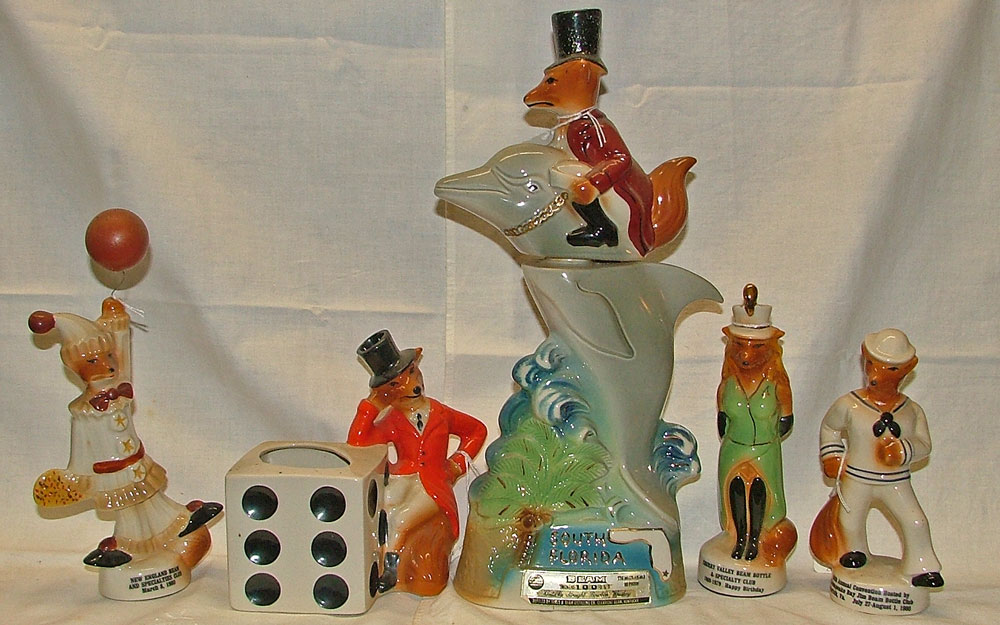
Jim Beam decanters and ‘go-withs’ are great collectibles. Most of these pieces have specific histories.
- Left is the Clown Fox Paperweight Figurine Jim Beam Bourbon Whiskey 1980 Regal China
- Fox Hunt Jim Beam 11th Annual Convention Las Vegas,NV 1981 Die Dice Regal China
- 1980 JIM BEAM Vintage Decanter Fox on a Dolphin South Florida Club Regal China
- Vintage Cherry Valley Jim Beam Specialty Club 1979 Fox Girl Bottle 8″ Tall Happy Birthday Regal China
- Rare Vintage 1980 Jim Beam Convention Sailor Fox Bottle 7″ Tall Regal China
Did you know that just because it’s ‘whiskey’, doesn’t make it ‘bourbon?’
Here are a few facts from their website:
- Bourbon is kind of like whiskey’s “sweet spot.” Because corn is a sweet grain, the more corn, the sweeter the whiskey—and bourbon needs to be at least 51% corn.
- In 1964, under President Lyndon B. Johnson’s administration, Congress declared bourbon “America’s native spirit”.
- The only thing that can be added to bourbon is water (and only to bring it down to proof).
- By law, bourbon must be aged in NEW charred oak barrels.
- It can’t say “bourbon” on the label if it’s not distilled and aged in the United States. It can’t be “Kentucky Straight Bourbon” unless it’s distilled and aged in Kentucky for at least 2 years. And it can’t say Jim Beam® unless it’s been made by seven generations of one family.
Check out their website for an interesting family business of seven generations. Beautiful story and some really remarkably beautiful decanters and ‘go-withs.’
Yep, stop by Bahoukas Antique Mall and Beer MuZeum for more fascinating Jim Beam collectibles. We’ll be watchin’ for ya.
Mar 7, 2018 | Blog, Collectibles, Home
Use them for cream, or even a small planter.

Left to right, you have a traditional Wedgewood creamer, a delightfully funny pig, a pair of flowered cows, and a Royal Copley Spaulding duck. If you’re a collector, these are really interesting. But if you’re looking to use one for a creamer, they are all delightful. If neither of those uses is one that suits you, maybe you like to “think Spring” and use them for a small plant.
Royal Copley
Spaulding China Company operated from 1942 to 1957 in Sebring, Ohio. Marketed based on titles chosen to denote levels of “sophistication” the merchandise was all of very high quality. “Royal Windsor” and “Spaulding” were marketed to high end shops and department stores. 85% of the product was marketed as “ Royal Copley”, and sold to affordable “dime stores” and chains like Woolworth’s. The name Royal Copley has survived to represent all of the products of Spaulding, and an entire class of pottery. __from Royal Copley Collecting
Stop in soon and take a peek at these. They’re really cute! We’ll be watchin’ for ya!
Mar 4, 2018 | Blog, Collectibles, Toys
Yes, we know there was only one!

On the right is a porcelain Noah’s Ark with Wade figurines (circa 2002) by Red Rose Tea. It includes 7 pairs of ‘critters’ plus Noah and his wife. It’s an adorable set.
On the left is a plastic Noah’s Ark set by ARCO. In this set, all the critics can be kept inside the ark since the top comes off.
Franchised gas stations used to give out all kinds of premiums to lure in folks from their road trips to fill up with Gulf over ARCO, or Esso rather than Sinclair.
Some of those premiums were in the form of maps, but others went straight to the back seat, to keep the kids quiet. If you grew up in the 1960s and 1970s, you’ll probably remember these gas station premiums.
… from Bestride.com
Remembering these premiums kind of makes me miss those road trips when we stopped for gas and got a toy or a juice glass as a premium! Ah, yes, the good old days.
Well, stop in and see what we have at Bahoukas. You know that we’ll be watchin’ for ya!
Mar 2, 2018 | Blog, Collectibles, Music
Beautifully Detailed 5″ Resin Busts
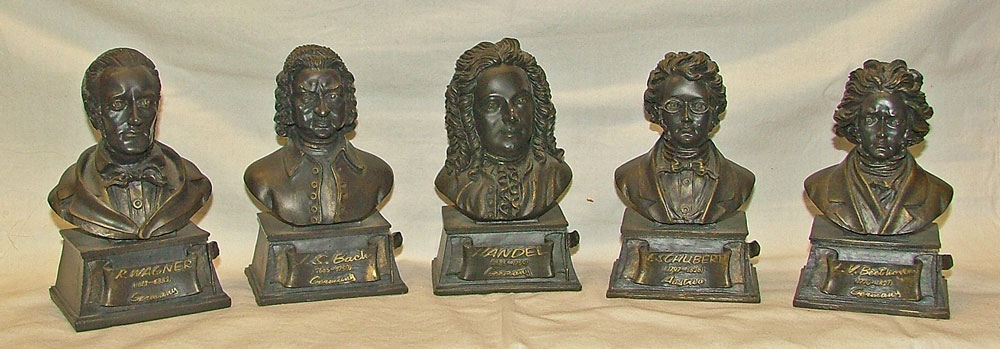
These 5″ resin busts would make a wonderful collection for that lover of classical music or maybe even someone who IS a classical musician! Left to right: R. Wagner, Bach, Handel, F. Schubert and Beethoven – these unique pieces are quite detailed! Have someone on your friends/family list that would truly love these? If so, stop in and browse at Bahoukas in Havre de Grace. You can be sure, we’ll be watchin’ for ya!
Feb 28, 2018 | Blog, Collectibles
… Oh, Yes, that last item is Postcards!

Yes, we have some sweet Playboy Club collectibles and a few other items. Included in the photo above are two glass Playboy Club mugs, a set of chrome bookends (yes, we have two), and a novelty mug that says, “Bottoms Up.”
In addition we have three wonderful lady bathing beauties on ‘squeaker postcards’ from the 1950s.
“It was a Squeaker,” said Horan, a tidy woman who wears her silver hair in a pageboy. She gives her age as “collecting postcards for over 50 years.”
A Squeaker, she explained, is a vintage postcard that has a hidden pouch for a noise-maker that squeaks when it’s compressed.
from the Denver Post
You just never know what we have at Bahoukas! So stop by and browse today. Yeppir, we’ll be watchin’ for ya!
Feb 26, 2018 | Blog, Collectibles, Toys
… Dispensers, that is!
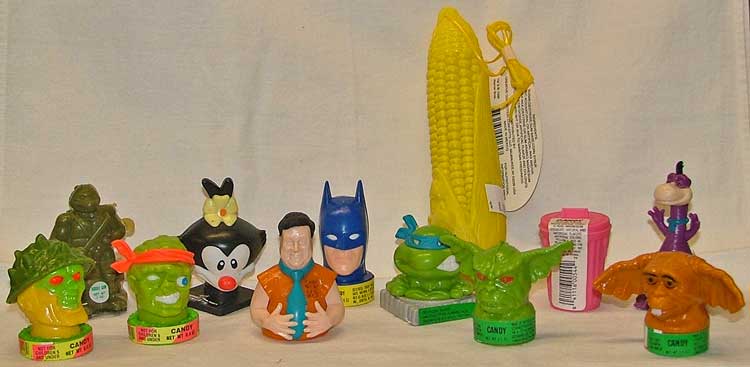
Have you ever considered starting a candy container/dispenser collection? If you have, we have a way to get you started. Not only do we have some great printers boxes that make an awesome shelf for these little collectibles, but we have a wonderful collection of containers to choose from. You most likely already know that PEZ collectibles are BIG in our shop. But we’ve added new items to our candy collectibles. Above are items from the 1980’s and 1990’s … from Mutant Ninja Turtles to the Flintstones … and yes, they still have the candy in them. (We really don’t recommend eating them! Yuck!) If this is a collection you might want to start, maybe share with a child in your life, or you’re looking for some items to add to your own collection, stop in to Bahoukas Antique Mall soon. Of course, we’ll be watchin’ for ya!
Feb 23, 2018 | Blog, Collectibles, Furniture, WhoZwhatsIts
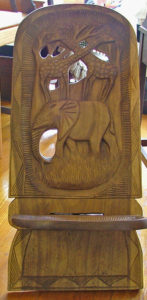
Yes… Seriously!
We received this beautiful, hand-carved African Birthing Chair from an Olympic skating coach who no longer had room for it in her home.
An absolutely exquisite piece, hand-carved with elephant and giraffes, this chair most certainly fits “Conversation Piece” to a T!
We believe it’s made of mahogany. Must be seen to be appreciated.
In the meantime, we thought you might get a chuckle from this interesting story of one woman’s first experience seeing a birthing chair in a museum.
Stop in soon and see this beautiful piece, then browse our shop. We’ll be watchin’ for ya!
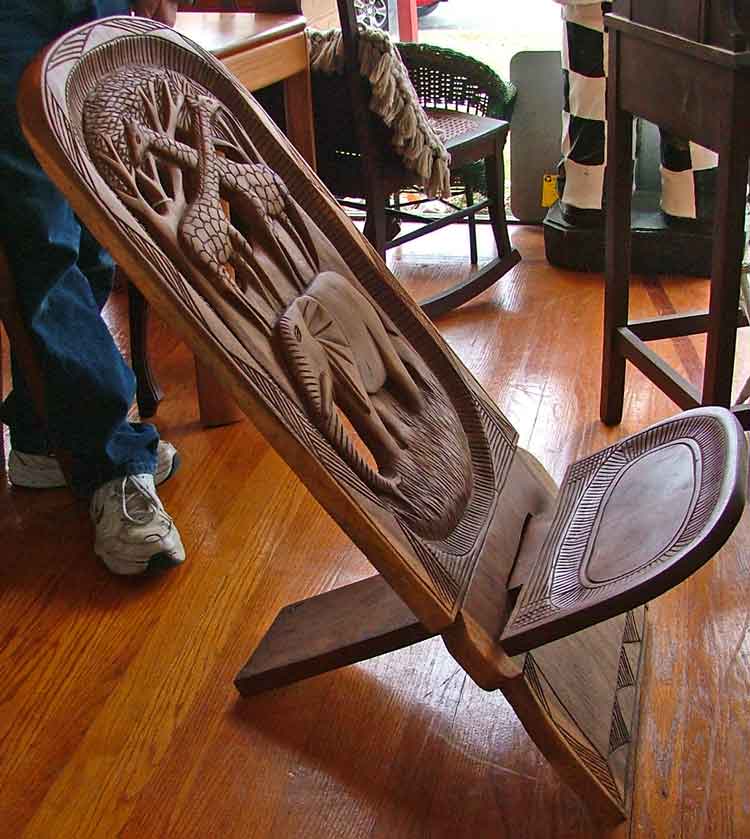
Feb 21, 2018 | Blog, Collectibles, Sports
It’s Spring Training Time for the Orioles!
Ed Smith Stadium is a baseball field located in Sarasota, Florida. The stadium was built in 1989 to replace Payne Park as a Spring Training and Minor League Baseball site. In 2010, the Baltimore Orioles began playing spring games at the ballpark. from Wikipedia
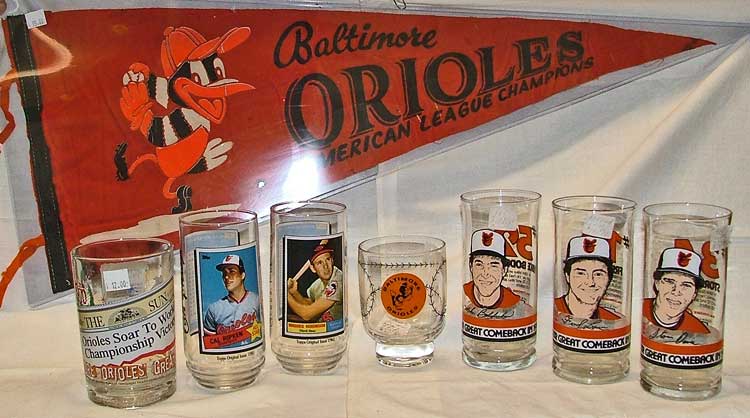
To celebrate Opening Day and Spring Training for the Orioles, we share a few Orioles Collectibles available at Bahoukas Antique Mall and Beer MuZeum. In this photo we have an 1960s Baltimore Orioles pennant, and a selection of glasses specific to the Orioles. So ‘get your game on’ and celebrate Spring with Baseball’s Spring Training!
If you’re feeling a bit down about the Orioles this year, check out this article that offers a bit of hope… then stay tuned as the Orioles get to work on their 2018 Season!
The Orioles have now supplemented their starting rotation with two veteran pitchers — more progress in less than a week of spring training than in the entire offseason — but the team is far from done in attempting to continue to upgrade its camp roster. from Edwardo A. Encina for the Baltimore Sun
Feb 18, 2018 | Antiques, Blog, Collectibles
Figural Bottle Openers Actually Have Rules!
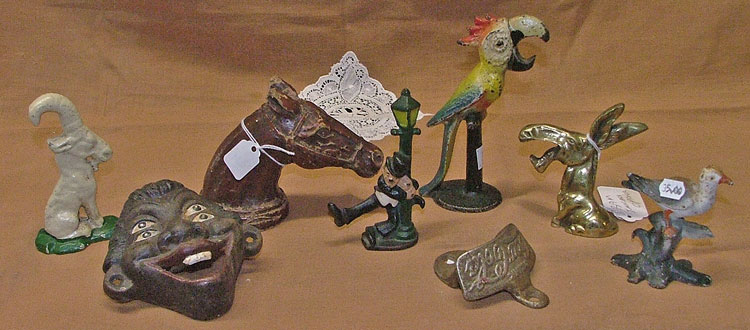
The above openers are from left to right: a reproduction cast iron goat and a 4-eyed, a 1940s Syroco horsehead, old cast iron drunk-on-a-pole, parrot and the seagull (on the right). A brass “donkey” and a Coca Cola wall mounted opener are included.
According to the site of the Figural Bottle Opener: they established the characteristics of these collectibles as follows:
At the first collector convention, members established the criteria for a figural bottle opener.
It must be a figure designed for the sole purpose of opening a bottle.
It must be three dimensional on both sides.
It must be free standing or wall mounted.
The part that actually lifts the bottle cap should be an integral part of the figure.
Some openers do not meet the last criterion, but have gained club acceptance because they were included in the original catalogues of well-known opener manufacturers. Most figural openers are made of painted cast iron or aluminum. The hook may be hidden in a piece of shrubbery or be part of a beak, tail or mouth.
Stop by and see this unique assortment of figural bottle openers. Of course, you’ll have to browse a few of our hundred other collections. And you know we’ll be watchin’ for ya!

























